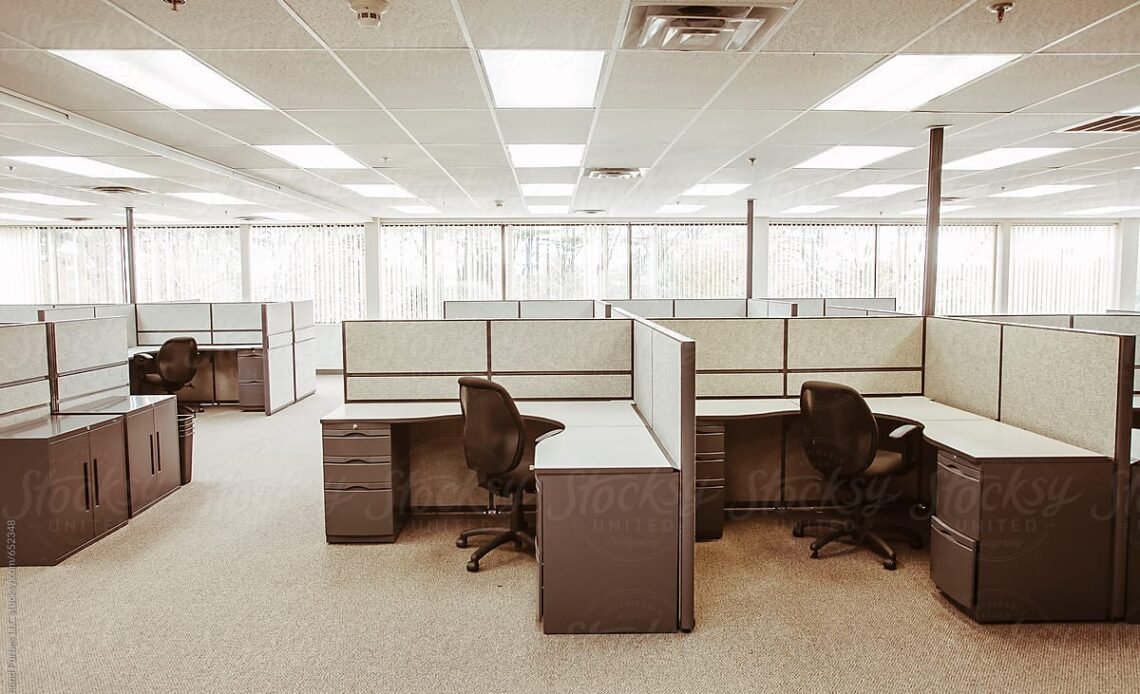Walk into most small business offices around 3 PM on a Friday and you’ll notice something interesting: they’re half empty. Maybe more than half. A few people clicking away at keyboards, some empty desks, a conference room that’s been dark all day. Yet the rent bill at the end of the month doesn’t care how many people actually showed up.
This is the question nobody wants to ask out loud: Are we paying for an office we barely use? For a lot of businesses, the honest answer is yes. And that’s money that could go toward things that actually grow the company.
The Math Doesn’t Add Up Anymore
Traditional thinking says serious businesses need offices. Full-time space with desks for everyone, conference rooms ready to go, a kitchen area, maybe a reception desk. Sounds reasonable until you start tracking how much that space actually gets used.
Most offices sit empty at least 40% of the time. People work from home a few days a week. They’re out meeting clients. They’re at conferences or taking vacation days. Sales teams are in the field. Even when people are “in the office,” they’re often on video calls anyway, which they could do from anywhere.
But here’s the problem: that unused space costs the same as used space. A desk that’s empty three days a week still factors into your monthly rent. A conference room that hosts two meetings per week is costing you money the other 166 hours.
The numbers get uncomfortable fast. Say you’re paying $3,000 monthly for office space. If your team only uses it 60% of the time, you’re essentially throwing away $1,200 every month. That’s $14,400 yearly for nothing. You could hire someone with that money.
What Companies Actually Need vs. What They’re Paying For
Here’s the thing: most businesses don’t need constant access to office space. They need professional space when it matters. Client meetings. Team collaboration sessions. Somewhere to handle confidential calls. A legitimate business address.
The rest of the time? People can work from wherever they’re most productive. For some that’s home, for others it’s a coffee shop, for some it’s the library. As long as the work gets done, does it really matter if they’re sitting in an expensive office?
But this creates a weird situation. Companies know they don’t need full-time space, but they worry about looking unprofessional or losing that sense of “being a real business.” So they keep paying for offices they barely use because it feels like what they’re supposed to do.
The smarter approach is paying for space based on actual needs rather than assumptions. Need a conference room twice a week? Pay for two sessions. Need desks for your team three days a month? Pay for three days. The concept is simple but it requires letting go of the idea that legitimate businesses must have dedicated offices sitting there 24/7.
When Empty Desks Cost More Than You Think
Direct rent is just part of the story. Empty office space comes with a bunch of hidden costs that keep draining money even when nobody’s there.
Utilities run whether the office is occupied or not. Heat in winter, AC in summer, lights that stay on for security reasons. Internet and phone lines you’re paying for monthly. Cleaning services that come by regardless of how messy the space actually got that week.
Then there’s furniture for all those desks, even the ones that rarely get used. Office supplies, coffee and kitchen stuff, maybe some plants to make it look less depressing. Repairs and maintenance that need handling. All of this adds up to roughly 30-40% on top of base rent.
And this is where it gets expensive: the opportunity cost. That money locked into unused office space could be going toward marketing, hiring, product development, or just staying in the bank as a safety cushion. Every dollar spent on empty desks is a dollar not growing the business.
The Flexible Space Reality Check
More companies are figuring out they can have professional space without the full-time commitment. The flexible office market has grown because it solves this exact problem: paying for what you actually use instead of what you might theoretically need someday.
A coworking space or flexible office arrangement lets businesses scale up or down based on real needs. Need a private office for two people this month? Done. Need a conference room for a big client presentation next week? Book it. Don’t need anything? Don’t pay for it.
The cost difference is significant. Instead of $3,000 monthly for a traditional office, companies might spend $800 for the space they actually use. Same professional appearance, same meeting rooms, same business address. Just way less money wasted on empty desks.
Some business owners worry this looks cheap or temporary, but that’s old thinking. Clients don’t care if you own the building or rent by the hour. They care if the meeting space is professional and if you can deliver on your promises. A nice conference room is a nice conference room regardless of the payment structure behind it.
How to Actually Figure Out What You Need
Most businesses are guessing about their space needs. They picked an office size that seemed reasonable and signed a lease without really tracking usage patterns. Big mistake.
Start by monitoring how your team actually works for a month. How many days per week is everyone in the office? How often do you need conference rooms? When do clients come by versus meet elsewhere? What could easily happen remotely?
Be honest about the answers. If your team is productive working from home most days, don’t force office time just to justify the rent. If you have two client meetings monthly that need professional space, you don’t need a full office for those eight hours.
Calculate what you’re spending per hour of actual use. Take your total monthly office costs (rent, utilities, everything) and divide by the hours the space is actually occupied. The number is probably way higher than you’d like to see. That’s your baseline for comparison.
Then look at alternatives. What would it cost to have a professional business address, rent conference rooms as needed, and give your team access to workspace a few days monthly? Often it’s a fraction of traditional office costs, even with generous usage estimates.
When Full-Time Space Actually Makes Sense
This isn’t about saying offices are always wasteful. Some businesses genuinely need dedicated space all the time.
If you’re running a business where the team needs to be together daily for collaboration, a full office makes sense. Manufacturing, retail, restaurants, healthcare facilities – these obviously need permanent locations. Some creative work benefits from everyone being in the same physical space regularly.
Security matters too. If you’re handling sensitive information that can’t leave a controlled environment, you need your own space with proper safeguards. Flexible arrangements won’t cut it.
And if you’ve got enough people that the office is consistently well-used, the per-person cost of traditional space might actually be competitive. A 10-person team using an office 40 hours weekly is different from a 3-person team showing up twice a month.
The key is matching your actual needs to what you’re paying for. If the math works out and the space serves a real purpose, keep it. But if you’re mostly paying for empty desks out of habit or fear of looking unprofessional, that’s worth reconsidering.
Making the Switch Without Freaking Everyone Out
Changing office arrangements can make people nervous. Teams worry they’re losing something important. Clients might wonder if the company is struggling. The transition needs handling carefully.
Start by being clear about why the change is happening. It’s not about cutting corners – it’s about spending money smarter. The goal is maintaining everything that actually matters (professional meeting space, team collaboration ability, business legitimacy) while dropping costs that don’t add value.
Give the team input on what they actually need. Maybe they want access to workspace a few days weekly but prefer working from home otherwise. Or maybe they want dedicated desks but only need them three days a week. Listen to what would make them more productive.
For clients, nothing has to change from their perspective. They still get the same professional meeting spaces, the same business address on correspondence, the same level of service. They probably won’t even notice the difference unless someone tells them.
What This Really Comes Down To
Office space should serve the business, not the other way around. Paying for empty desks because that’s what businesses are “supposed” to do is outdated thinking that drains resources from things that actually matter.
The businesses doing well right now are the ones that figured out what they truly need and stopped paying for what they don’t. Sometimes that means keeping a traditional office. Often it means something more flexible that costs less and works better.
Either way, it starts with asking the uncomfortable question: Are we actually using this space, or just paying for it out of habit? The answer might save a lot of money.







